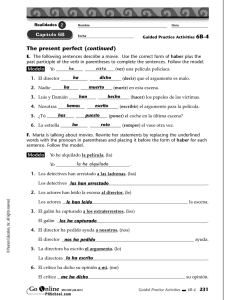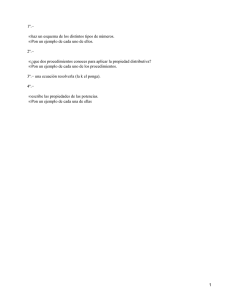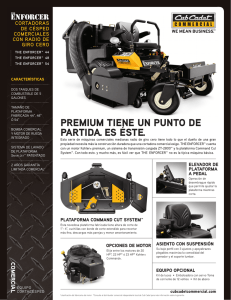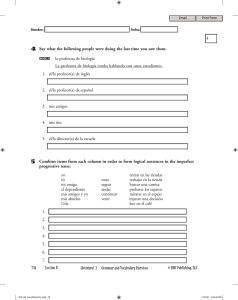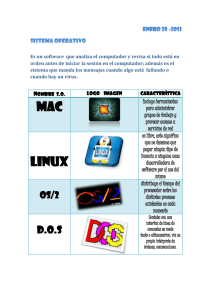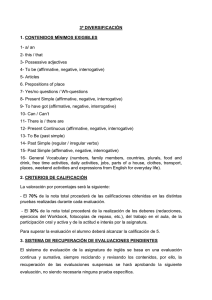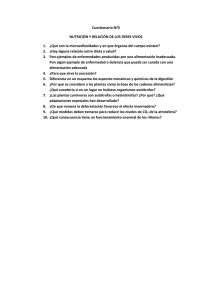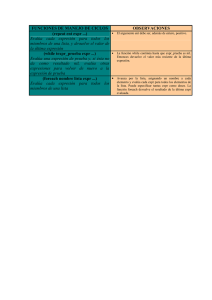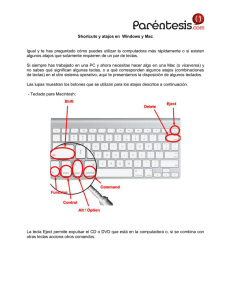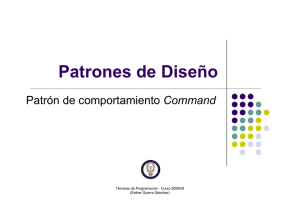Irregular affirmative tú commands (p. 168) Sal maneja
Anuncio
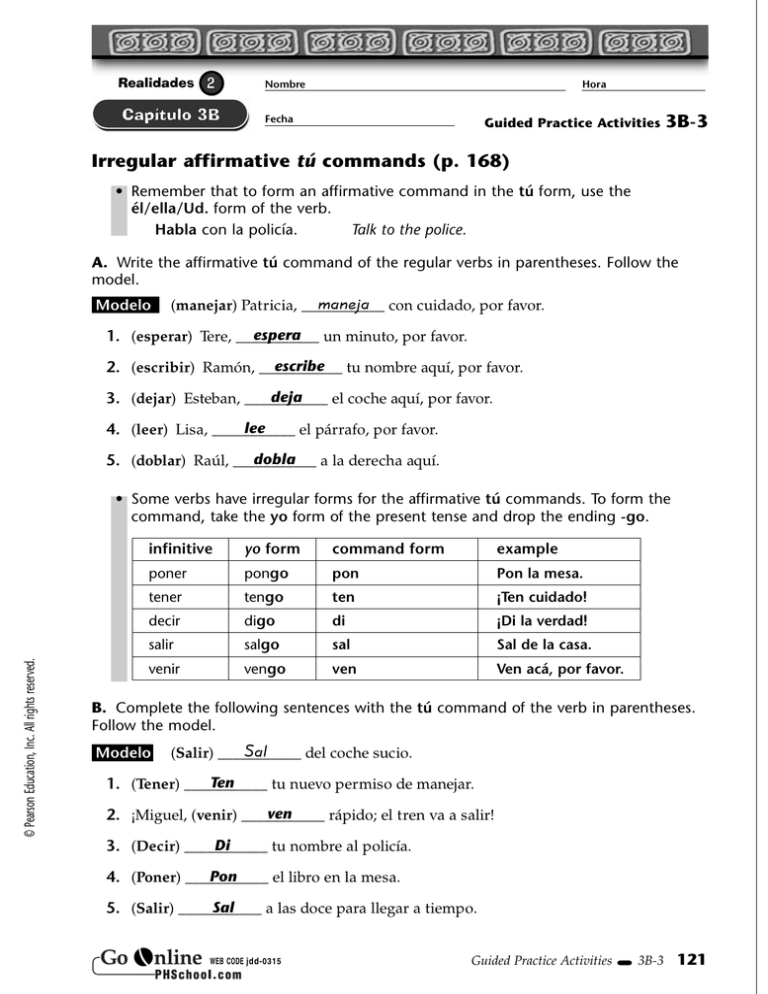
Realidades Nombre Hora Fecha Guided Practice Activities 3B-3 Irregular affirmative tú commands (p. 168) • Remember that to form an affirmative command in the tú form, use the él/ella/Ud. form of the verb. Habla con la policía. Talk to the police. A. Write the affirmative tú command of the regular verbs in parentheses. Follow the model. Modelo maneja con cuidado, por favor. (manejar) Patricia, ___________ espera 1. (esperar) Tere, ___________ un minuto, por favor. escribe tu nombre aquí, por favor. 2. (escribir) Ramón, ___________ deja 3. (dejar) Esteban, ___________ el coche aquí, por favor. lee 4. (leer) Lisa, ___________ el párrafo, por favor. dobla 5. (doblar) Raúl, ___________ a la derecha aquí. © Pearson Education, Inc. All rights reserved. • Some verbs have irregular forms for the affirmative tú commands. To form the command, take the yo form of the present tense and drop the ending -go. infinitive yo form command form example poner pongo pon Pon la mesa. tener tengo ten ¡Ten cuidado! decir digo di ¡Di la verdad! salir salgo sal Sal de la casa. venir vengo ven Ven acá, por favor. B. Complete the following sentences with the tú command of the verb in parentheses. Follow the model. Modelo Sal (Salir) ___________ del coche sucio. Ten 1. (Tener) ___________ tu nuevo permiso de manejar. ven 2. ¡Miguel, (venir) ___________ rápido; el tren va a salir! Di 3. (Decir) ___________ tu nombre al policía. Pon 4. (Poner) ___________ el libro en la mesa. Sal 5. (Salir) ___________ a las doce para llegar a tiempo. WEB CODE jdd- 0315 Guided Practice Activities 3B-3 121 Realidades Nombre Hora Fecha Guided Practice Activities 3B-3a Irregular affirmative tú commands (continued ) • The verbs hacer, ser, and ir also have irregular tú commands: hacer: haz ser: sé ir: ve C. Complete the following exchanges with the tú command of the verb in parentheses. Follow the model. Modelo ELISA: ¿Cómo llego a la fiesta, Mamá? Ve MAMÁ: ¡(Ir) ___________ en un coche! 1. CARLOS: No sé dónde queda la plaza. ¿Qué hago? Haz MAMÁ: ¡(Hacer) ___________ una pregunta! 2. PATTY: ¿Qué debo hacer para no recibir multas de la policía? Sé RUTH: (Ser) ___________ una buena conductora. 3. ALBERTO: ¿Cómo llego a la Avenida Juárez? Ve LOLA: ¡(Ir) ___________ en el metro! 4. JUANJO: Tengo miedo de hablar con la policía sobre la multa que recibí. Sé RAÚL: (Ser) ___________ cortés y todo va a estar bien. D. Read the sentences below. Complete the second sentence in each pair by writing the appropriate direct object pronoun in the space provided. Don’t forget to add any necessary written accents. Modelo la Mánda_______. Manda la carta. 1. Haz la pregunta. la Haz_______. 2. Pide las direcciones. ´ las Pide_______. 3. Visita el Parque de las Palomas. ´ lo Visita_______. 4. Pon el permiso de manejar en tu mochila. lo Pon_______ en tu mochila. 5. Mira las señales cuando manejas. ´ las Mira_______. 6. Invita a tu amigo y a mí a la fiesta. ´ nos Invita_______ a la fiesta. 122 Guided Practice Activities 3B-3a WEB CODE jdd- 0315 © Pearson Education, Inc. All rights reserved. • If you need to use an affirmative command with a direct object pronoun, the pronoun is attached to the end of the command. Remember to add a written accent over the stressed vowel if the command had two or more syllables. Ponlo aquí. Put it here. Búscame en el parque. Look for me in the park.
